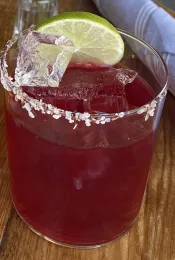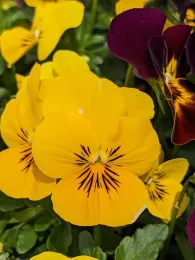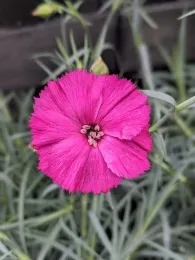
Hibiscus are one of many flowers that are edible. Edible flowers can be used to add color, fragrance, flavor, and texture to foods. They can be added to soups and salads raw, used in entreés or desserts, make tea or flavored water, candied, breaded, or fried. They have the benefit of often being healthy while providing few calories.

Precautions
Before consuming edible flowers, one should always proceed with caution. As with any new food item, slowly introduce specific flowers to the diet to see if any allergic reactions occur. The flowers should come from your garden or trusted source that has not been sprayed with pesticides. Do not use flowers from plants or bouquets that have been purchased from a floral shop, nursery, or garden center, as they may have been treated with pesticides. Many flowers share common names, so always look for the scientific name (genus and species) to ensure you have the right flower.
Harvesting
Choose flowers that have just fully opened, harvesting in morning right after the dew has dried. Flowers need to be carefully washed out, and in many cases, remove the stamens, styles, pistils, and sepals (the parts that hold the pollen and the green stems that hold petals together). Use as soon as possible for maximum flavor.
So Many Flower Choices!

Nasturtiums: these flowers have a delicious, peppery taste similar to watercress and their colorful blooms look lovely in summer salads.
Pansies: come in a wide range of colors with a mild lettuce-like taste which makes them popular for salads. The entire flower can be used.
Marigolds: some varieties have better flavors than others, so experimenting is a must. French marigolds have a bright, citrus-like flavor and a colorful addition to salads. The petals can be cooked in dishes and are sometimes referred to as “poor man's saffron.” Dried petals of African marigolds can be used to make a tea.

Dianthus or pinks: Their petals can be steeped in wine or sugared for use in cake decorations. The petals are unexpectedly sweet, if the bitter white base of the flowers is cut off.
Honeysuckle blossoms, as the name suggests, have a honey-like flavor. They bring a fragrant sweetness to jams, jellies, cakes, candies, and other sweet treats.
Roses: are often used in Middle Eastern dishes in the form of rose water which can add an intense flavor to a dish. The petals can also be sugared or used as garnishes.
Lavender: not only smells wonderful, but English and French lavenders have a sweet flavor used in a wide range of baked goods, ice creams and other recipes. However, use sparingly, as the flavor can be overpowering.

Denise Godbout-Avant has been a Stanislaus County Master Gardener with UC Cooperative Extension since 2020.

